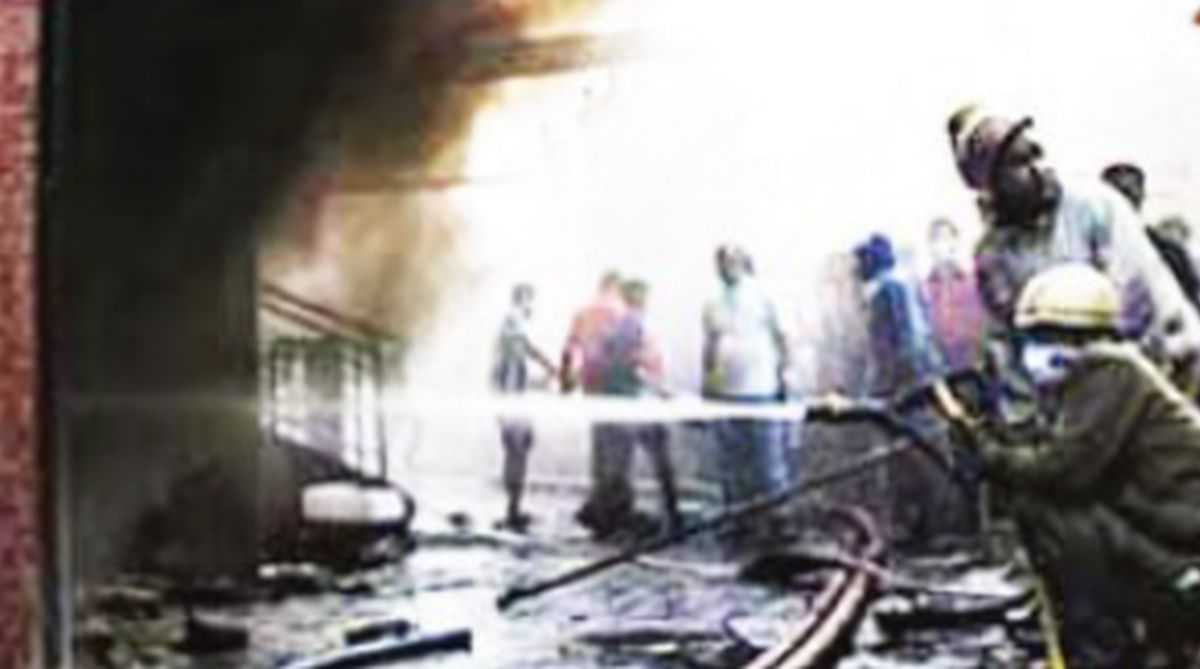Enjoy free bike ride to poll booths in 4 cities
Citizens of Kolkata, looking forward to exercising their franchise during the ongoing elections would be able to enjoy a faster conveyance to their polling booth, free-of-cost.

Fire at AMRI Hospitals, Dhakuria on 9 December, 2011. (FILE PHOTO)
Close to seven years after the horrendous fire tragedy at AMRI Hospital in Kolkata’s Dhakuria (December 2011), the probe report of the Justice Tapan Mukherjee Commission of Inquiry has taken the lid off a pretty kettle of fish.
The commission has blamed the Board of Directors fair and square, asserting that the worthies ~ businessmen, doctors and shareholders ~ were responsible for the country’s worst-ever hospital fire that killed no fewer than 92 patients and hospital staff, all of whom died of asphyxiation.
The accident, it would be useful to recall, had reinforced the sclerosis in Bengal’s health sector. The chief regret at this juncture must be the inexplicably sluggish response of the state’s health department which sat on the findings for a year after it was advanced to Nabanna.
Advertisement
The delay has been deliberate, raising suspicions that there were certain aspects of the tragedy that needed to be airbrushed both by the AMRI authorities and the government. The hospital, after all, had germinated as a joint venture in the heyday of the CPI-M dispensation.
The bereaved families do deserve an answer from the Chief Minister, who helms the department albeit with an MoS who holds independent charge. “The members of the Board of Directors are responsible for flouting the rules of fire safety measures, thus paving the way for the accident,” is the crux of the issue that has been highlighted in the report.
Whereas the upper basement floor was constructed only for car parking, the authorities allowed the space to be utilised to dump highly combustible waste material, notably PVC cables, wooden boxes, LPG cylinders, abandoned mattresses. Small wonder the resultant smoke was as black as it was dense.
The breathless patients were driven quicker to death than to a scintilla of medical attention.
The grief is overwhelming and it is now pretty obvious that the certitudes of urban planning were accorded short shrift. Thus it was that the vertical opening at every floor level was not sealed with a fire-stop. In the net, the smoke and the heat were fanned to the upper floors.
Furthermore, in 2011 the centrally air-conditioned building had no mechanical ventilation system which could have cleared the smoke in the upper floors.
“There was gross negligence on the part of the on-duty security and hospital staff in responding to the situation in proper time and to rescue the patients from the danger zone,” is the commission’s finding on the inbuilt lapses, about which the authorities could scarcely have been unaware.
Compensation can bring cold comfort to the bereaved. A patient visits a hospital to be cured, not to perish in a fire that was ignited by gross negligence. This is the parable to be drawn by all hospitals ~ in the state sector or private.
Advertisement